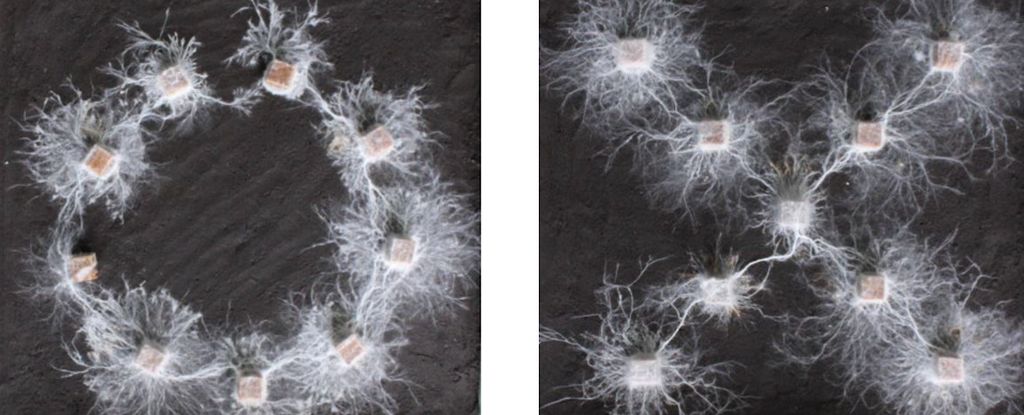An ability to sense and respond to the world is vital for the survival of most organisms, but methods of perception can vary significantly. We tend to think of animals as the most gifted in that regard… but a species of fungus is offering a challenge to what we think we know about intelligence.
A series of experiments has revealed that a fungus called Phanerochaete velutina is able to distinguish between different arrangements of its neighbors and adjust its behavior accordingly. This suggests that the fungus can perceive differences in the spatial arrangement of resources and adopt the best strategy for using them.
It’s the latest in a series of studies that suggest the creeping organisms vital to the decay processes of the floral world might have something shockingly similar to cognition.
“You’d be surprised at just how much fungi are capable of,” says microbial ecologist Yu Fukasawa of Tohoku University in Japan. “They have memories, they learn, and they can make decisions. Quite frankly, the differences in how they solve problems compared to humans is mind-blowing.”
Fungi represent a broad array of organisms, including yeasts, molds, and mushrooms. They play an important role in Earth’s ecosystems, helping to break down dead organic matter into the rich humus that is recycled into living organisms.
Phanerochaete velutina plays a major role in the decomposition of wood in temperate forests. It grows out of wood, and goes in search of other wood to colonize. On the surface, it looks a bit like scraps of white or orange velvet; but, up close, it consists of a network of fibrous strands, known as the mycelium.
Fukusawa and his colleagues conducted their experiment using small blocks of wood already colonized with Phanerochaete velutina. They placed nine of these blocks in two different arrangements: a circle, or a cross. Then, they watched and documented how the fungus mycelium changed over time.
The researchers proposed that if the fungus was not able to sense the world around it and make decisions accordingly, it should spread out indiscriminately.
This, as you may have already guessed, is not what happened. Instead, the mycelium spread out from a central point until it encountered other tendrils of mycelium from neighboring blocks. These tendrils linked up, forming and strengthening connections. Then the excess tendrils were retracted, and the mycelium started behaving as one unit, sending out strands in directions most likely to result in successful foraging.
For the circular arrangement, the number of mycelium connections was pretty much the same for all the blocks. However, by day 116 the foraging tendrils were only sent outwards; the area inside the circle remained empty. How and why the fungus ascertained that this area was unlikely to be a fruitful avenue of exploration is unknown.
For the cross-shaped arrangement, the four blocks at the tips of the cross had the most mycelial connections, and the foraging tendrils splayed outwards from all four points. These four points, the researchers suggested, represented the best outposts from which the fungus could conduct its exploration of the surrounding environment.
The researchers say this is evidence that the fungus recognizes the layout of its surroundings and communicates its layout across the network to coordinate its activity in order to optimize its formation in that environment.
This, the researchers say, offers new avenues for exploring and understanding the way fungus and other organisms such as slime molds “think”.
“If we define cognition as ‘the sensory and information-processing function of autonomous biological systems,’ the difference in network structure and wood decay function that was demonstrated by the fungal mycelia between the Circle and Cross arrangements might be a form of recognition by fungi,” the researchers write in their paper.
“The functional significance of the fungal mycelia may provide insights into studying the primitive intelligence of brainless organisms, understanding its ecological impacts, and developing bio-based computers.”
The research has been published in Fungal Ecology.





